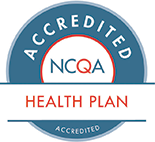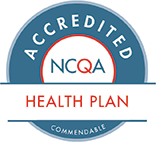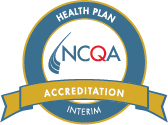Risks and benefits
It is important to discuss all the possible outcomes of this procedure with your healthcare provider in order to have realistic expectations of the results. In some cases, depending on your condition, surgery may not always result in complete and full recovery. See Alternative Treatments below for treatment options that can be just as effective as surgery, that are less invasive and may offer benefits like shorter recovery time, shorter time away from work, and fewer to no post-surgery follow-up visits.
The goal of hip replacement surgery is to relieve pain and increase the mobility and function of a damaged hip joint. If a stiff, painful hip joint has forced you to cut back on everyday activities, successful surgery may allow you to resume them.
Hip replacement surgery is generally safe, but as with any surgery, complications can occur. Although some complications are serious, most can be treated successfully.
Complications of hip replacement:
- Blood clots in your leg veins can form as a result of decreased movement of your leg after surgery, as well as from injury to the veins during surgery. Your doctor usually gives you blood-thinning medications after your surgery to try to prevent clots from forming. Compression devices, such as elastic stockings, and exercise to increase blood flow through the veins in your legs also can reduce your risk.
- Infections can occur at the site of your incision and in the deeper tissue near your new hip. Most infections are treated with antibiotics, but a major infection near your prosthesis may require surgery to remove and replace the prosthesis.
- During surgery, healthy portions of your hip joint may fracture. Sometimes, the fractures are so small that they heal on their own, but larger fractures may be corrected during surgery with wires, cables or bone grafts.
- Certain positions can cause the ball of your new joint to become dislodged. To avoid this, it is often recommended that after surgery you don’t bend more than 90 degrees at the hip and don’t let your leg cross the midline of your body. If the hip dislocates, your doctor may fit you with a brace to keep the hip in the correct position. If your hip keeps dislocating, surgery is often required to stabilize it.
- Over time, your new joint may loosen, causing pain in your hip. Surgery might be needed to fix the problem.
- Though rare, your artificial hip can break several years after surgery. Another surgery would be required to replace the broken joint.
- Occasionally, even though your surgeon will take steps to avoid the problem, your new hip can make your leg longer or shorter than the other one. Sometimes this is caused by weakness in the muscles surrounding your hip, which also puts the hip at risk of dislocation. In this case, progressively strengthening and stretching those muscles can make it more stable.
- Sometimes the soft tissues around your joint harden (called “ossification”), making it difficult to move your hip. This usually isn’t painful. If you’re at risk of ossification, your doctor may recommend medications or radiation therapy to prevent it from happening.
- Your prosthetic hip joint may wear out eventually, so if you have hip replacement surgery when you’re relatively young and active, you may need a second hip replacement within your lifetime. However, new materials are making implants last longer, so a second replacement may not be needed for many years.
Resources
Please visit these resources for more information:
Hip Replacement. Mayo Foundation for Medical Education and Research (MFMER). 2001-2010. Mayo Clinic
Hip Replacement Tutorial. 1995-2009. National Institutes of Health.
What is Hip Replacement? 2002-2010. EhealthMD.
We're sorry, this information is not available in . Please use the dropdown at the top of the page if you would like to view information for another state.
Questions?
If you can't find an answer, please feel free to contact our Customer Service Customer Service Customer Service
Questions?
If you can't find an answer, please feel free to contact our Customer Service
Employer web tools
Benefit Tracker
Check benefits, eligibility, incentive and utilization
Rate finder is now in the Producer Dashboard
Log in with your current username and password to create quotes for groups up to 50.
Producer DashboardLog in






Hello.
We have exciting news to share. ODS is changing its name to Moda Health.
Moda comes from the latin term "modus" and means "a way". We picked it because that's what we are here to do: help our communities find a way to better health.
Together, we can be more, be better.
Please select the state you live in, or the state where your employer is headquartered, so we can tailor your experience:

Hello.
Please select the state you live in, or the state where your employer is headquartered, so we can tailor your experience:
Privacy notice
We use cookies and similar analytics technologies to understand how visitors interact with our website, improve performance, and enhance user experience. These tools help us analyze traffic patterns and usage trends.
We do not collect or store personal information, track users for advertising purposes, or use social media plugins.
By continuing to use this site, you acknowledge our use of cookies for analytics purposes only. For more information, please refer to our Privacy Policy.
Changing your location to Oregon
You can return to your previous location in the site header.


